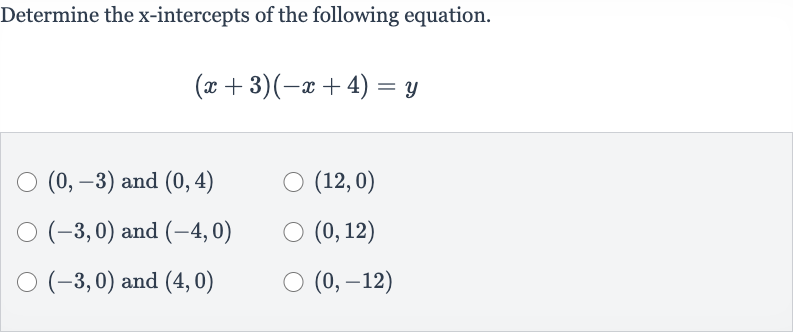Full solution
Q. Determine the -intercepts of the following equation. and and and
- Definition of -intercepts: Understand the definition of -intercepts.The -intercepts of an equation are the points where the graph of the equation crosses the -axis. At these points, the value of is .
- Set equation to zero: Set the equation equal to zero to find the x-intercepts.Since represents the height above the x-axis, we set to to find the x-intercepts.
- Solve for x: Solve the equation for x.We have a product of two factors equal to zero, so we can use the zero product property, which states that if a product of two factors is zero, then at least one of the factors must be zero.So, we set each factor equal to zero and solve for x: or
- Solve first equation: Solve the first equation for .
- Solve second equation: Solve the second equation for .
- Combine results: Combine the results to find the -intercepts. The -intercepts are the solutions to the equations from Steps and , which are and .
More problems from Write a quadratic function from its x-intercepts and another point
QuestionGet tutor help
QuestionGet tutor help
QuestionGet tutor help
QuestionGet tutor help
QuestionGet tutor help
QuestionGet tutor help
QuestionGet tutor help
QuestionGet tutor help

